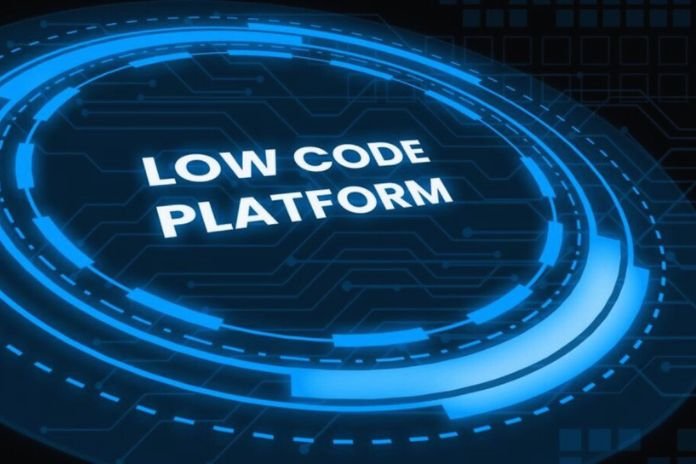Low Code Application Platforms: The State Of The Market For 2024

Introduction: Low Code Application Platforms
How do we characterize the low code application platforms (LCAP) market? Gartner’s analysis reflects a changing perimeter. Are you looking for a Low Code Application Platforms (LCAP)? Keep your eye on adjacent markets like iPaaS and RPA. Gartner sent this message last year as part of the Magic Quadrant dedicated to LCAP. This was not, by far, the first time that the American cabinet pointed out the diminishing boundaries between these categories of products.
He goes further this year, saying that Low Code Application Platforms are part of a low-code market that also includes MXDP, iPaaS, RPA, BPA, CADP and other smaller segments. In Gartner terminology, MXDP stands for “multi-experience developer platform”. These platforms are “designed to program, manage and analyze multiple programs at the same time.” They are thus named “because of the multiple entry and management methods they use”.
The Quadrant inclusion criteria have been updated to reflect the “increasing overlap” between Low Code Application Platforms – LACP and MXDP, both functionally and in terms of target uses. This has consequences for classified suppliers: HCLSoftware and Globant are entering. At the same time, Quickbase is out of the ranking due to a positioning “oriented mainly on the management of collaborative work”. It is the same fate for Alibaba, failing to reach the required threshold on a “customer interest” indicator, supposed to reflect the relevance of suppliers to the market.
AI Is Still Optional, Among Other Things
Apart from this update, the inclusion criteria have changed little. On the functional side, the AI bricks remain optional, such as the possibility of creating your connectors or implementing your design systems. On the business side, we are sticking to the plan adopted last year, with three options:
- $60 million in annual turnover + at least 100 client companies with more than 1,000 employees
- $25 million in turnover + at least 5,000 companies of this size
- A community of more than 100,000 developers
As opposed to the previous criteria, which focused on turnover, this “triple” is supposed to “better reflect the balance between financial performance, adoption by customers and use by developers”. Last year, it notably allowed Zoho to re-enter the Quadrant.
Seventeen Suppliers, Six “Leaders”
The picture given by Gartner corresponds to the situation as of August 2023. Positioning in the Quadrant is based on two dimensions. On one side is a “vision” axis. It focuses on strategies (sectoral, geographic, commercial, marketing, product, etc.). On the other, an “execution” axis which reflects the ability to effectively respond to demand (customer experience, pre-sales performance, quality of products/services, etc.).The five “leaders” from last year remain so. These are Mendix, Microsoft, OutSystems, Salesforce and ServiceNow. Appian joins them, returning to a position he occupied a few years ago.
Low Code Application Platforms: Prices, A Sensitive Point
Only some of these six providers get a good point on pricing. In broad terms, Gartner makes the following comments:
- Appian: high price, even if the community edition helps to get started
- Mendix: in addition to high prices, the business model lacks flexibility to cover all use cases
- Microsoft: high pricing . .. and complex (example: additional licenses to access internal data sources and certain governance functionalities)
- OutSystems: to the cost of licenses is added the new economic model based on “application objects” (screens, database tables, API methods, etc.)… which is likely to increase the bill
- Salesforce: essential elements, such as the Apex debugger, require additional licenses, and encryption follows a freemium model
- ServiceNow: expensive and complex as it stands (the provider promises more visibility and control)
The Appian Product “Learning Curve”
Appian stands out by integrating the Low Code Application Platforms component into a broader offering, which also includes RPA, data fabric, process mining, etc. It also has its ecosystem (in particular, its AppMarket) and the capacity to scale up its products. Gartner nevertheless highlights the “learning curve” inherent in said products. And adds that Appian still needs to be profitable, due in particular to its expansion in Asia and the development of its partner network.
A “Too Technical” Approach At Mendix?
Mendix benefits from integration with the IT and OT portfolios of its parent company, Siemens. Its products are well-received on most key functionalities, particularly API integration, security and governance. Gartner also welcomes a capacity for innovation, whether through AI assistance, support for UX in VR or digital twins. Marketing, on the other hand, is not one of Mendix’s strong points. His message would be “too technical,” and the number of community events would be limited. The ecosystem is, moreover, less extensive than that of the main competitors.
Lack Of Consistency At Microsoft
In many other markets, Microsoft has its Office suite and its cloud CRM to push its LCAP offer. Gartner notes the volume of connectors available (more than a thousand), advances in GenAI and native governance capabilities. It could be more optimistic regarding product consistency. In this case, it is not easy to unify practices, as specific tools are only available for some application models (canvas, templates, Power Pages). Also, note that support for custom APIs is limited to Dataverse.
Verticality At OutSystems
OutSystems’ marketing initiatives earn it a good point. The same thing happened to the cloud version of its LCAP. And, more generally, specific capabilities of its products, from AI assistance to native CI/CD. There is room for improvement in terms of sectoral strategy: for integrations and expertise in this area, we must turn to partners. Also, pay attention to the increase in skills necessary to move from the on-prem version (O11) to the cloud version.
Too Many Apexes At Salesforce?
The sectoral strategy is, on the contrary, a strong point of Salesforce, which superimposes its Low Code Application Platforms bricks on its “vertical” clouds. The same goes for the events part (Dreamforce, TrailblazerDX, World Tours). And for the ecosystem (MuleSoft, Slack, Tableau, AppExchange, etc.), “the largest at the moment in low-code”, according to Gartner. These multiple products involve multiple low-code engines, which can contribute to an offer considered complex. Point of vigilance also on innovation: Salesforce would lack a “sense of priorities” by maintaining such a level of support from Apex…
BPA Standards Not Supported At ServiceNow
ServiceNow stands out for its adoption of premium tiers of its App Engine platform, which is part of its expansion strategy beyond core ITSM. Its rapid expansion on the Asia plate earns it another good point. Gartner adds the capacity to respond to the market (training program, investment in ERP modernization, etc.). Although it is an optional criterion, the inability to import its design systems makes ServiceNow a point of vigilance. Just like the lack of support for BPMN 2.0 and DMN standards, it is often required for scenarios involving BPA.
Read Also: Negative Review On Facebook: How To Respond?






